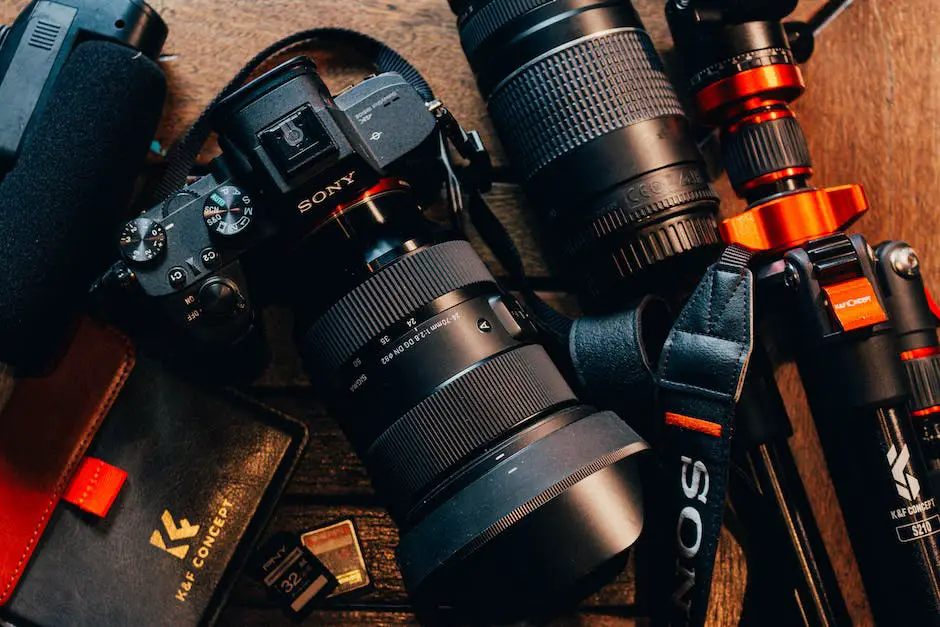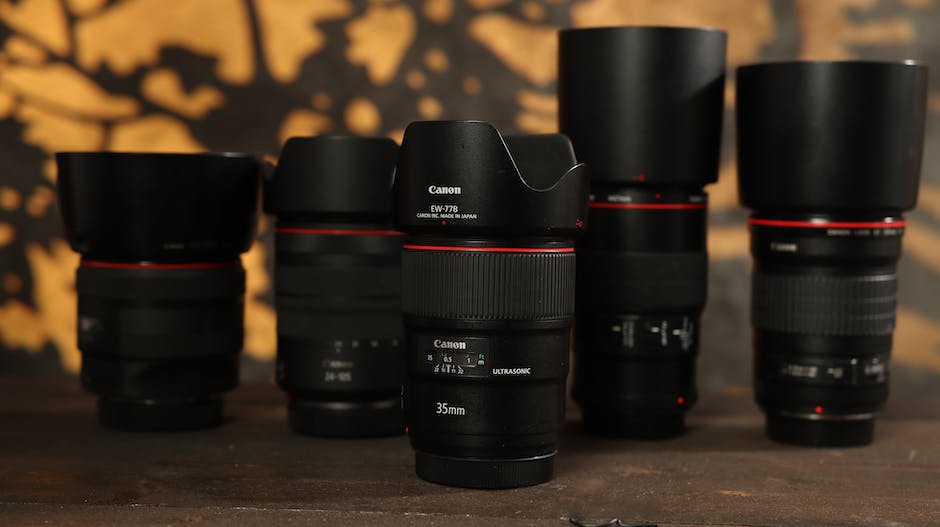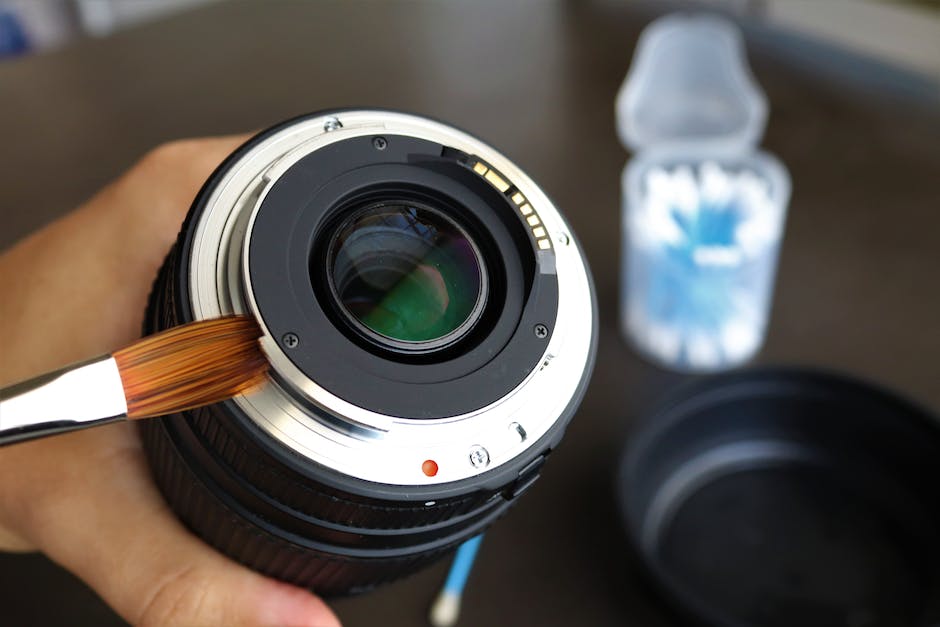In today’s photography world, the Canon 5D is recognized for its exceptional capacity to produce high-quality images, largely attributed to its compatible lenses. Being a vital part of the camera, understanding how these lenses operate opens up a plethora of opportunities in capturing exquisite photographs. Whether you are an enthusiast or a professional, this detailed guide offers insight into the diverse range of Canon 5D lenses, their technical characteristics, how to select the perfect lens based on your needs, alongside essential tips for maintaining them. Follow through as we unravel the nuances of prime, zoom, wide-angle, macro, and telephoto lenses, and harness these insights to capture the world through your Canon 5D in all its splendor.
Understanding Different Types of Canon 5D Lenses
Understanding Different Canon 5D Lenses
The Canon 5D is a top-tier, professional-grade DSLR camera that is renowned for its high-quality images and extensive range of lens options. In order to fully utilize the potential of this remarkable camera, it is essential to understand the different lenses available and how they can affect your photography.
Prime Lenses
A prime lens is a lens that has a fixed focal length. This means, unlike zoom lenses, a prime lens cannot zoom in or out. The main advantage of prime lenses is their exceptional image quality. They are designed to take photographs at a specific focal length, which means they can optimize the quality of images at that particular length. A 50mm prime lens, for instance, is excellent for portrait photography, releasing a sharp, crisp image and a beautiful blurred background effect (bokeh).
Zoom Lenses
A zoom lens, as the name suggests, has a variable focal length, offering greater flexibility compared to a prime lens. This lens allows you to capture a range of perspectives from wide-angle shots to close-ups without changing lenses. For example, the 24-105mm is an ideal all-around lens that covers most situations, making it a favorite piece of gear for travel or event photographers.
Wide-Angle Lenses
Wide-angle lenses have a focal length of under 35mm and are ideal for capturing broad scenes. These lenses are a staple for landscape photographers, allowing them to capture the grandeur of wide-open landscapes or intricate city skylines. The Canon 5D is compatible with a range of wide-angle lenses, such as the 16-35mm f/2.8L II.
Macro Lenses
Macro lenses are designed for close-up photography. They offer the ability to capture fine detail at a close range, making them excellent for photographing small subjects, such as flowers or insects. Macro lenses, like the 100mm f/2.8L Macro, provide 1:1 magnification, offering true macro performance for the Canon 5D.
Telephoto Lenses
Telephoto lenses are the tool of choice when you need to capture subjects that are far away. They have a long reach, with focal lengths that can exceed 100mm. For example, the Canon EF 70-200mm f/2.8L IS III USM lens, a popular professional lens, is perfect for situations such as wildlife photography or sporting events where the subject cannot be approached closely.
Getting to Grips with the Canon 5D Lenses
One of the greatest features of the Canon 5D is the wide array of lens options available for it, each one meticulously designed to cater to diverse photography requirements. Your photographic results will be largely influenced by the specific lens you use, so it’s essential to choose one that aligns perfectly with your desired outcome. Equipped with this knowledge of the lens variety on offer, you’ll be well-positioned to make the best selection that fits your photography style and needs.

Technical Characteristics of Canon 5D Lenses
Delving Deeper: Focal Length in the Canon 5D Lenses
The concept of focal length plays a critical role in the world of photography and is particularly important when it comes to Canon 5D lenses. Used to dictate the lens’s field of view and magnification, focal length is measured in millimeters (mm). A lower figure, such as 24mm, yields a broader view, perfect for capturing stunning landscapes or wide architectural structures. On the other hand, a larger figure, such as 200mm, gives you a closer, more narrow view – perfect for wildlife photography or capturing intricate close-up details. With the Canon 5D’s full-frame sensor, the focal length indicated on the lens delivers the field of view you would expect, setting it apart from crop-sensor cameras that tend to ‘extend’ the focal length.
The Importance of Aperture in Canon 5D Lenses
Another vital parameter in Canon 5D lenses is the aperture. Often referred to as the f-stop, the aperture controls the lens’s opening, which governs the amount of light entering the camera. A lower f-stop like f/2.8 signifies a wide aperture, letting in plenty of light and creating a shallow depth of field, ideal for portraits where the subject is sharp against a blurred background. On the other hand, a higher f-stop like f/16 signifies a smaller aperture, reducing light entry but providing a larger depth of field, well-suited for landscapes where maximum detail is desired from foreground to horizon. The Canon 5D’s lens lineup offers a range of aperture options to suit a variety of shooting conditions and artistic preferences.
Exploring Image Stabilization with Canon 5D Lenses
Image Stabilization (IS) is a feature found in several Canon 5D lenses. In simple terms, IS helps to counteract camera shake, often caused by handholding the camera or using slower shutter speeds. If your shots are frequently plagued by motion blur despite proper focus, an IS-enabled lens could be your savior. Image Stabilization works by shifting lens elements to compensate for minor movements, allowing you to shoot handheld at slower shutter speeds without noticeable blur. This feature can be invaluable in low light situations where a tripod isn’t available or practical.
Unlocking the Art of Canon 5D Lenses
Mastering the different properties of each lens, in the case of a Canon 5D DSLR, is paramount for capturing quality images. The true artistry lies within the ability to tap into the unique combination of lens aspects such as focal lengths, aperture settings and image stabilization techniques. Remember, the perfect lens doesn’t always have the most substantial range or the lowest f-number. Instead, the ideal lens should align with your specific creative style and cater to the conditions you are shooting under.

Choosing the Right Lens for Your Canon 5D
Fundamentals of Lens Selection
Before diving into lens selection for your Canon 5D, it’s crucial to grasp the basics surrounding the different lens categories. Wide-angle lenses, perfect for capturing expansive landscapes or interior spaces, encompass more of a scene within a single frame. Standard lenses, usually within the range of 35mm to 85mm, emulate the perspective of the human eye and offer versatility across various shooting situations. Telephoto lenses are any lens with a focal length beyond 85mm, ideal for photographing distant subjects, thus favored in wildlife and sports photography. Lastly, macro lenses excel in capturing fine details, making them a preferred choice for product or nature photography due to their close-focus capabilities.
Match Lens to Subject
Aside from technical aspects, matching your lens choice to your subject matter is key when working with the Canon 5D. For instance, a wide-angle lens is great for capturing sweeping landscapes, while a telephoto lens works well for wildlife photography by allowing you to maintain distance from your subjects. Macro lenses excel in close-up photography, showcasing the minutiae in product shots and nature’s intricate details.
Account for Lighting Conditions
Lighting conditions are also important considerations when choosing a lens for your Canon 5D. Some lenses have wider maximum apertures, measured by the f-stop, which offer better performance in low light and can create a shallow depth of field effect. If shooting in dynamic lighting situations, consider a lens with a high dynamic range to capture scenes without losing detail in highlights or shadows.
Determining Functionality
It’s critical to search for lenses with functionalities that best fit your style or needs. For example, if you’re constantly on the go, a lens with image stabilization could be beneficial. If you photograph fast-moving subjects, a lens with a fast autofocus system might be a better pick as it will help to ensure sharp images.
Considerations for Budget and Quality
Lastly, consider your budget and desired image quality. While some lenses can be quite expensive, they often offer superior image quality and durability. However, don’t dismiss cheaper alternatives. The Canon 5D’s sensor can still perform well with budget lenses. Check out reviews, sample photos, and do some test shoots (if possible) to gauge whether a lens’s quality fits with your standards before making a final decision.
Diving into the world of Canon 5D means understanding the importance of choosing the right lens. It’s a process that requires striking a balance between several factors such as the subject you’re shooting, the environment, your personal style and of course, your budget. Making informed decisions can significantly boost the quality of your results.

Proper Maintenance and Care for Your Canon 5D Lenses
Importance of Regular Maintenance for Your Canon 5D Lenses
As a Canon 5D user, making a habit of regularly cleaning your lenses is key to maintaining their functionality and prolonging their lifespan. Elements such as dust, moisture and fingerprints can subtly degrade the quality of your images. A basic lens cleaning kit, consisting of a lens cleaning solution, a cleaning cloth and a lens blower, will serve your needs. Blow the dust off the lens using the lens blower before using the cleaning solution. Remember, the solution should be applied to the cloth, not the lens directly. Then, gently wipe the lens in a circular motion without applying excess pressure. A well-maintained lens is fundamental to capturing high-quality images.
Storage of Canon 5D Lenses
Proper storage of Canon 5D lenses helps to prevent dust accumulation and possible damage. The lenses should be stored in a cool, dry place where temperatures range between 32 and 104 degrees Fahrenheit. The lenses should also be kept away from substances with strong odors such as mothballs and insect repellents as they could degrade the lens coating. Using a lens cap and a rear lens cap when the lens isn’t in use also ensures that the lens’s front and rear elements are protected from dirt and scratches. A lens case or a camera bag with padded compartments also provides excellent protection for the Canon 5D lenses.
Handling of Canon 5D Lenses
Correct handling of Canon 5D lenses reduces the risk of damage. Avoid touching the glass elements of the lens with your fingers as it leaves oil deposits which can cause smudges. Always hold the camera by the camera body, not by the lens. When changing the lens, always turn off the camera to prevent dust from being pulled in by the static electricity. Also, ensure to mount and unmount the lens correctly to avoid damaging the lens or camera mount.
Preventing Lens Damage
Preventing lens damage ensures optimal performance and longevity of the Canon 5D lenses. Avoid exposing your lenses to extreme temperatures and humidity, both of which can damage the lens and camera. Using a UV filter can also prevent possible damage to the front element of the lens. Additionally, never try to disassemble the lens yourself, as this could lead to costly damage. If the lens isn’t working properly, always seek professional help.
Lens Maintenance Tips
Additional lens maintenance tips include regular checks of lens functionality. Running these checks helps to identify any potential issues early. Also, ensure to read through and follow all manufacturer guidelines on lens care. Even with the best care measures, Canon 5D lenses – like any other, can develop problems. In case of any issues, seek professional help for the best solution.

Gaining mastery of your Canon 5D and its lenses is more than just understanding the features and benefits of each lens. It requires the capacity to interpret the demands of your environment and subject matter, align it with your personal style, and select the lens best suited for the circumstance. Additionally, ensuring that these lenses are well-cared for is equally critical. Armed with the knowledge from this guide, you are now ready to explore your creativity, project your unique perspective of the world through your lens, and keep them operating at peak performance. Your Canon 5D is more than just a camera; it’s your tool to craft visual stories. So go ahead, mix, match, experiment with different lenses, and most importantly, enjoy the process!
Originally posted 2023-08-26 03:44:58.




